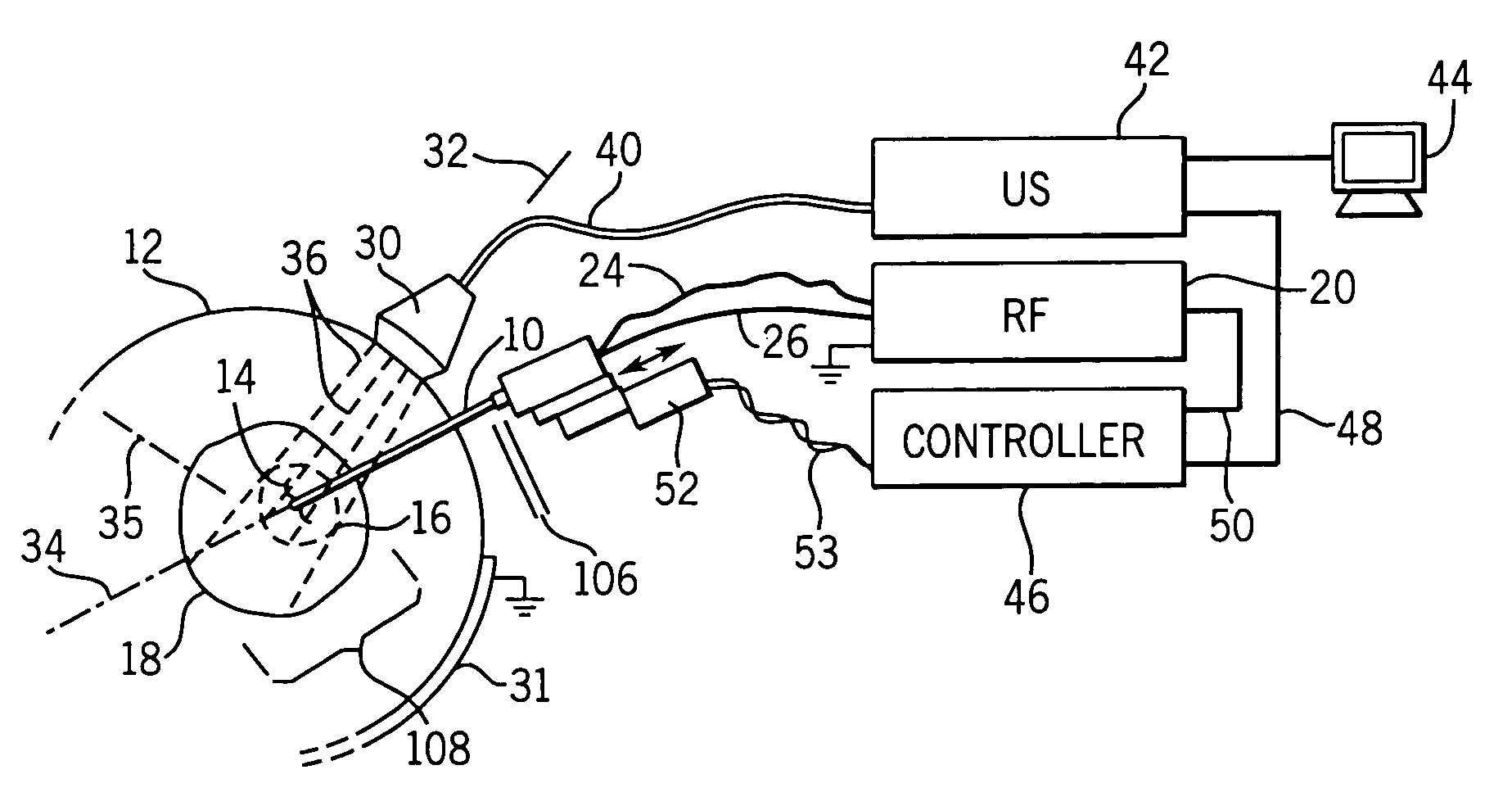Elastographic imaging of in vivo soft tissue
- Summary
- Abstract
- Description
- Claims
- Application Information
AI Technical Summary
Benefits of technology
Problems solved by technology
Method used
Image
Examples
Embodiment Construction
[0042]Referring now to FIG. 1, an RF ablation probe 10 may be inserted percutaneously into a patient 12 to have its tip located at an ablation region 16 within an organ 18 such as the liver.
[0043]Extensible electrode tines 14, at the tip of the probe 10, may grip the tissue of the ablation region and provide a greater area of electrical contact to conduct ablative current from an RF source 20. Electrical energy from the RF source 20 is conducted through an insulated shaft of the probe 10 to the conductive tines 14 where ionic heating of the tissue kills tumor tissue. A large-area grounding pad 31 placed on the patient's skin provides a return path for this current. The tines 14 may include thermocouples for temperature measurements.
[0044]RF ablation probes 10 of this kind having extensible tines and thermocouple sensors are well known in the art and readily available. The RF 20 source may be a Rita Model 30 electrosurgical device manufactured by Rita Medical Systems Inc., Mountain V...
PUM
 Login to View More
Login to View More Abstract
Description
Claims
Application Information
 Login to View More
Login to View More - R&D
- Intellectual Property
- Life Sciences
- Materials
- Tech Scout
- Unparalleled Data Quality
- Higher Quality Content
- 60% Fewer Hallucinations
Browse by: Latest US Patents, China's latest patents, Technical Efficacy Thesaurus, Application Domain, Technology Topic, Popular Technical Reports.
© 2025 PatSnap. All rights reserved.Legal|Privacy policy|Modern Slavery Act Transparency Statement|Sitemap|About US| Contact US: help@patsnap.com



